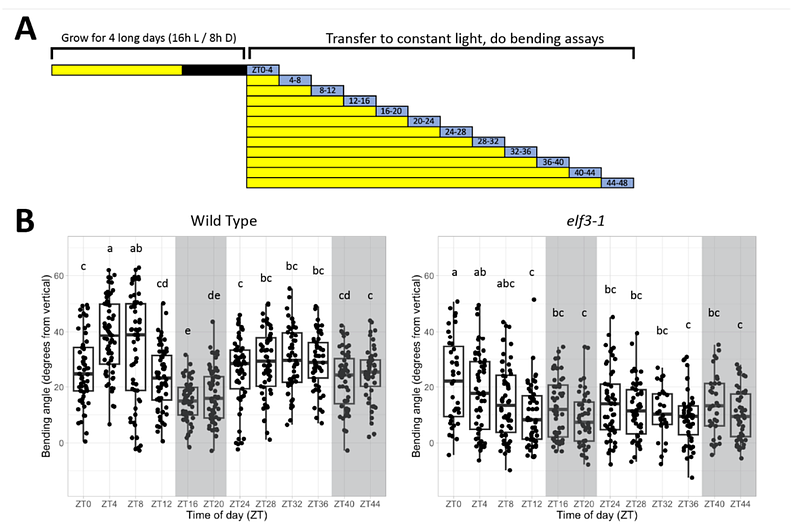Early Flowering 3 (ELF3) inhibits hypocotyl phototropism in light-grown Arabidopsis seedlings.

Early Flowering 3 (ELF3) inhibits hypocotyl phototropism in light-grown Arabidopsis seedlings.
Cobb, G.; Krahmer, J.; Nawkar, G. M.; Boccaccini, A.; Fankhauser, C.
AbstractPhototropic bending of plants towards a light source allows them to position their photosynthetic tissues to optimize light capture. In light-grown (deetiolated) Arabidopsis seedlings, phototropic bending of the hypocotyl is inhibited by light with a high red:far-red ratio (HRFR) and high levels of blue light (HBL). This occurs via activation of the phytochrome B (phyB) and cryptochrome 1 (cry1) photoreceptor signaling pathways. Both phyB and cry1 act upstream of PHYTOCHROME INTERACTING FACTOR (PIF) transcription factors, which are required for hypocotyl bending in light-grown seedlings. Presently, it is not known whether other pathways are involved in the inhibition of PIF-mediated phototropism in light-grown seedlings. To address this, we conducted a screen to identify mutants with increased phototropic bending relative to wild type in HRFR+HBL conditions. Through this screen, we identified EARLY FLOWERING 3 (ELF3), a member of the Evening Complex (EC), as a key inhibitor of phototropic bending in green seedlings. We show that both ELF3 and LUX, another component of the EC, inhibit phototropic bending upstream of PIF4/PIF5. Furthermore, we show that phototropic bending in Arabidopsis seedlings is subject to circadian regulation in an ELF3-dependent manner. Finally, we provide evidence that ELF3 in the grass Brachypodium distachyon also affects phototropism but in an opposite way than in Arabidopsis.